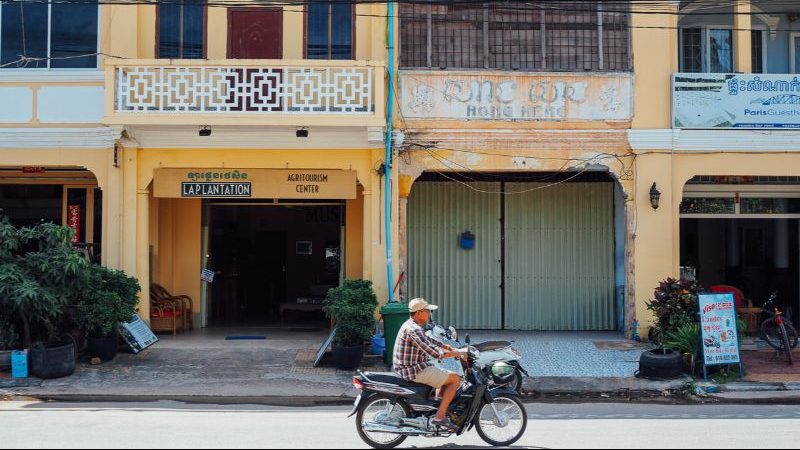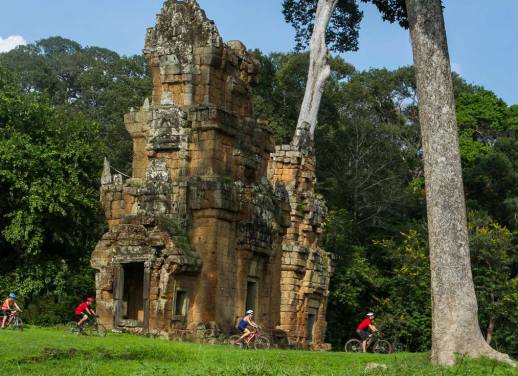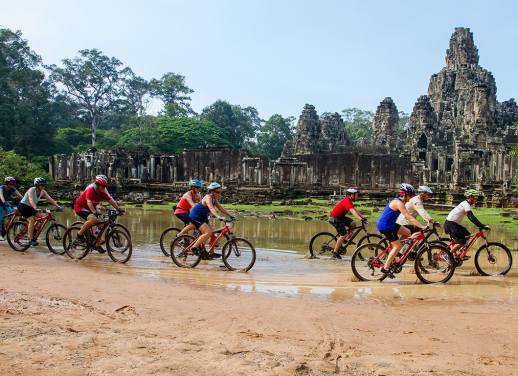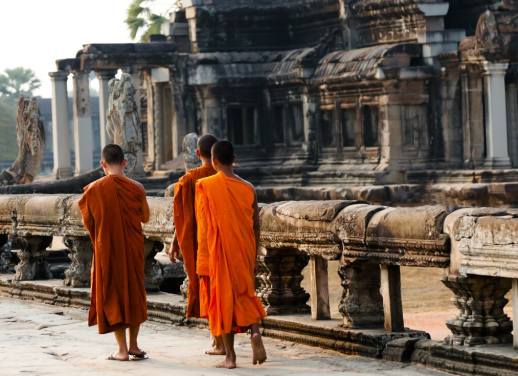Never-ending rice paddies punctuated with stilted houses and swaying palm trees, buxom buffalo dragging their heels along dusty back roads. For too many travellers, rural Cambodia is nothing more than a set of fast-moving vignettes glimpsed from the window of a bus.
Most people tend to focus their Cambodia itinerary on Siem Reap and Phnom Penh, perhaps with a jaunt along the coast thrown in. Between the temples of Angkor and the bright lights of the capital, there’s a whole country waiting to be explored.
Getting around Cambodia might require a bit more time and energy, but some of the country’s most fulfilling travel experiences can only be found in its humble provincial heart. Each of these small towns brings something special to the table – be it awesome nature, intriguing architecture, local handicrafts, or hidden temples that pre-date Angkor.
CHECK OUT OUR FULL RANGE OF SMALL GROUP ADVENTURES IN CAMBODIA HERE
Here are five charming small towns in Cambodia that are well worth a visit.
1. Kampot
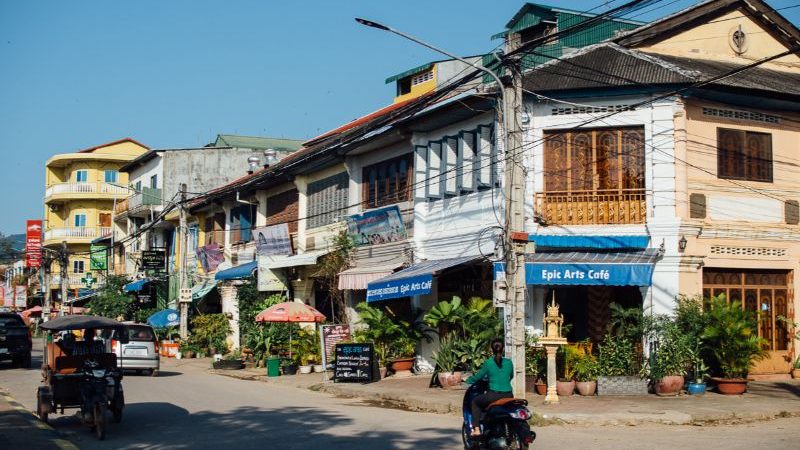
Kampot life.
Southwest of Phnom Penh, just shy of the coast, this riverside town is synonymous with one thing: pepper. When Cambodia was part of French Indochina, more than 2,600 tonnes of red, black and green Kampot peppercorns were exported to Europe every year. A few of the plantations have since been revived and now host guided tours and cooking classes.
Another legacy of Kampot’s French period is its heritage architecture. Highlights include the old Governor’s House (now the Kampot Provincial Museum), a pre-independence cinema that’s been transformed into a boutique hotel, and the canary-yellow Kampot Fish Market, which now houses a popular seafood restaurant.
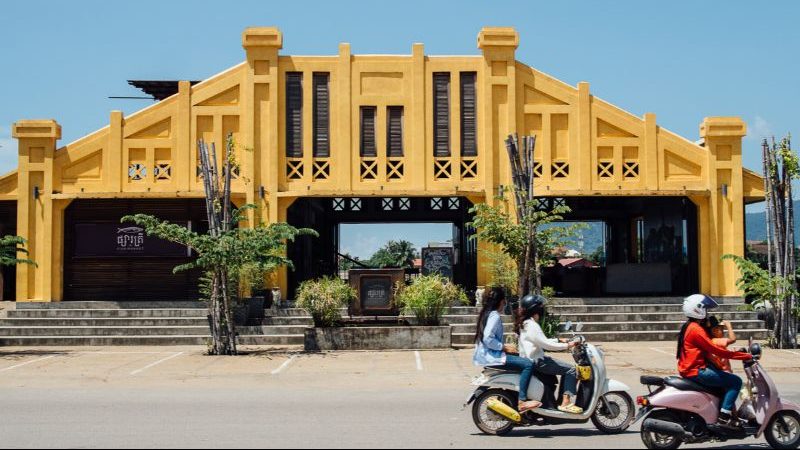
Kampot’s canary-yellow fish market.
It’s hard to resist the call of the languid Preaek Tuek Chhu river, which winds its way through the centre of town. The northern part of the waterway, especially the ‘Green Cathedral’ – a natural river loop shaded by dense forest – is perfect for swimming, kayaking and stand-up paddleboarding. For a real adventure, hire a motorbike or tuk-tuk to explore Bokor National Park on the city’s western fringe. The brick skeletons of abandoned hotels, casinos and a Catholic cathedral are all that’s left of this former hill station. They cast eerie silhouettes against the edge of the plateau, especially on a misty day.
2. Kampong Chhnang
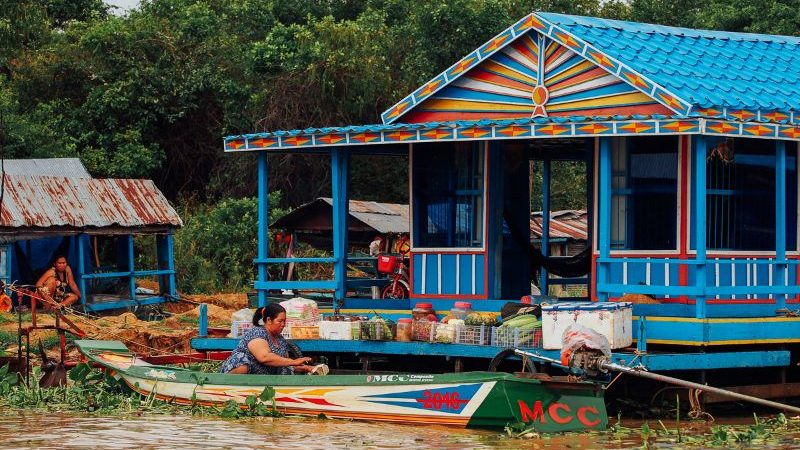
Floating villages in Kampong Chhnang.
As you travel around rural Cambodia, you’ll notice most houses have two or three massive clay pots sitting outside their front door. These are used for storing water, and most of them come from the town of Kampong Chhnang – which literally translates to ‘Port of Pots’.
Skilled artisans have been hand-making earthenware pottery here for generations. The large water vessels are cast using wooden frames, while smaller pots are thrown on foot-peddled wheels. A tour of the workshops usually involves trying your hand at moulding something from the area’s distinctive yellow clay.
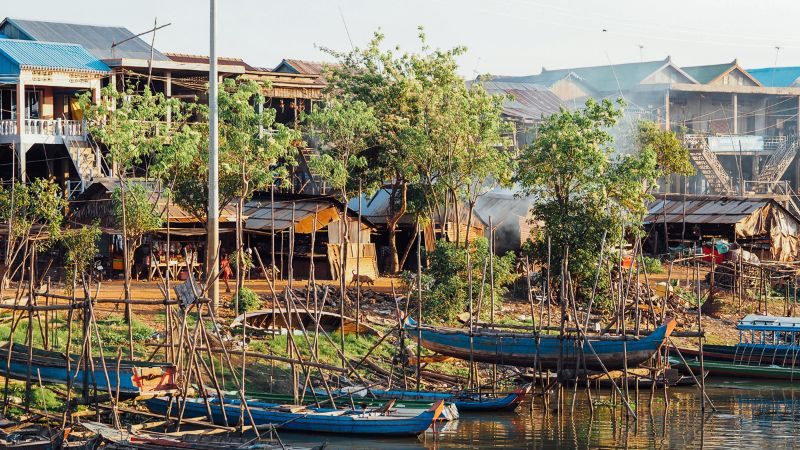
Kampong Chhnang.
Kampong Chhnang sits right where the Tonle Sap river opens up from the lake. When you hire a motorboat to take you around the floating villages, you’ll see how entire communities subsist off the life-giving waters. This area sees few visitors, so it’s much quieter than the floating villages around Siem Reap on the upper part of the lake. Less than 100 kilometres north-west of the capital, Kampong Chhnang makes for an ideal side-trip from Phnom Penh.
3. Kampong Cham
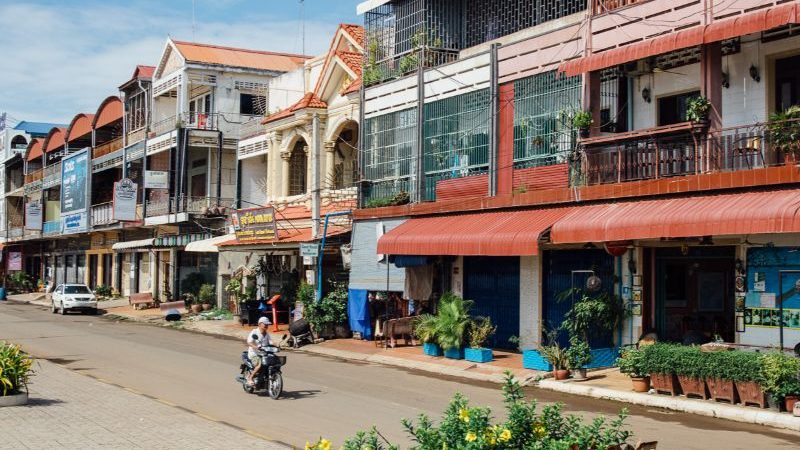
Street scenes in Kampong Cham.
Kampong Cham offers a window onto what Phnom Penh might have looked like a century ago. The charming centre of this small town is characterised by wide boulevards, colourful shophouses, and a Central Market whose vaulted ceilings resemble the Art Deco markets in Battambang and the capital.
The lazy flow of traffic and pancake-flat streets make Kampong Cham perfect for exploring by bicycle. Head over the river to the pink French Tower, which looks an awful lot like a lighthouse, and climb the precarious inner staircase for a view of the city.
There are several significant pagodas north of town, including Phnom Srei and Phnom Pros, ‘Men’s Temple’ and ‘Women’s Temple’, that sit facing each other on two opposing hillocks. The black sandstone Wat Nokor Bachey is famous for its Bayon-like engravings and was placed on UNESCO’s Tentative List in the 1990s.
WANDER AROUND KAMPONG CHAM ON OUR 12-DAY CAMBODIA ADVENTURE. FULL DETAILS HERE.
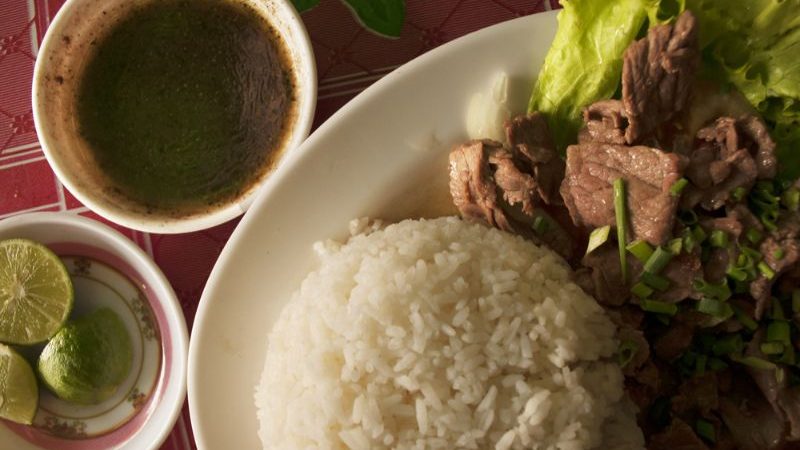
Beek lok lak. Photo by All themes, Shutterstock.
Finish the day with a hearty plate of beef lok lak (and maybe a few Angkor beers) at social enterprise Smile Restaurant. At sundown, the entire population of Kampong Cham pours out onto the riverfront boulevard. Street food carts set up and aerobics classes kick off. It’s a terrific opportunity to people-watch and chat with inquisitive locals.
LEARN ALL ABOUT CAMBODIAN CUISINE ON OUR 9-DAY CAMBODIA REAL FOOD ADVENTURE. MORE INFO HERE.
4. Kratie
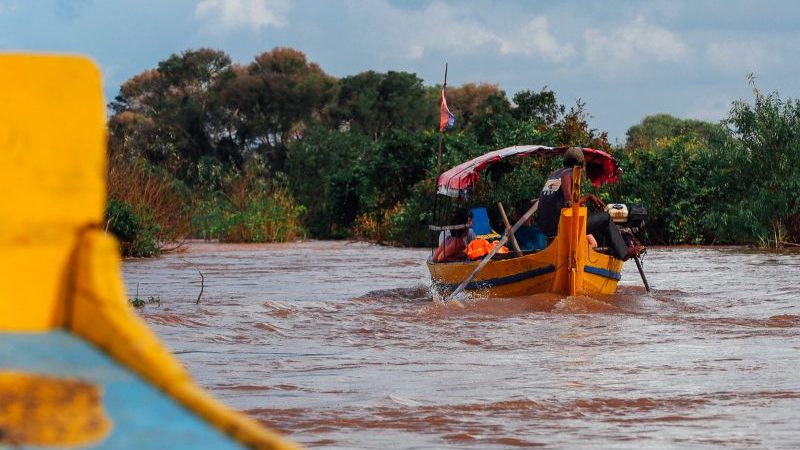
Cruising along the Mekong in Kratie.
Further up the river towards the Lao border, the town of Kratie is the jumping-off point for one of Cambodia’s more unusual activities: dolphin watching. The marshy Mekong waters around Kratie are a sanctuary for around 100 critically endangered Irrawaddy dolphins. Encouragingly, the number of births has been increasing of late, thanks in large part to conservation efforts.
Boat trips depart from the village of Kampi just north of Kratie. The dolphins are extremely elusive, but you have a better chance of seeing them in the late afternoon. Professional skippers know where to go and are trained to keep a safe distance.
Another highlight of Kratie is cycling around the villages on Koh Trong island, a huge sandbar in the middle of the Mekong. Along the way, there are homestays where you can stop for a bite to eat. While in town, be sure visit Kratie market and pick up a few kralan, a local delicacy of slightly sweet sticky rice and red beans steamed inside bamboo shoots.
RIDE AROUND KRATIE ON OUR 9-DAY HIKE, BIKE & KAYAK ADVENTURE IN CAMBODIA. FULL DETAILS HERE.
5. Banteay Chhmar
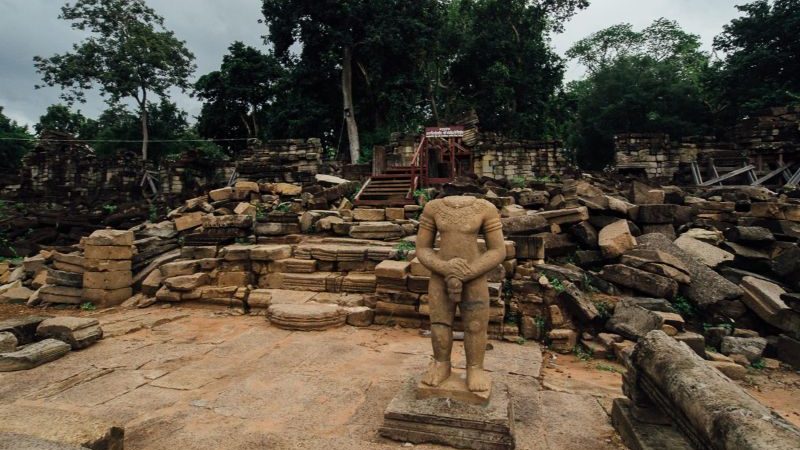
One of the temples at Banteay Chhmar.
While nothing could compete with the grandeur of Angkor Wat, you’d be surprised by just how many small temple complexes there are all around Cambodia. Banteay Chhmar, or the ‘Citadel of the Cat’, was built by Jayavarman VII (the same king responsible for Angkor Wat) in the remote northern corner of the country, close to the Thai border.
The 12th-century moated temple bears many similarities to Angkor. It too fuses Buddhist and Hindu symbols. Its crowning glory is a set of carvings that depict the god of compassion with 32 spiralling arms. A set of satellite temples, including a smaller version of Bayon, complete with face towers, are sprinkled around the small town.
The temples of Banteay Chhmar were partially destroyed by the Khmer Rouge and many of the stone carvings were looted. In recent years, work has commenced to reconstruct them, one laterite block at a time. It’s still very much a work in progress, but the results so far are nothing short of awe-inspiring.
Visits can be organised through the Banteay Chhmar Community-Based Tourism project, an innovative organisation that trains local guides and manages a network of homestays in the villages around the temples. They can also organise cooking classes, or a lantern-lit dinner with live music inside the temple grounds.
Inspired by Cambodia? Explore our full range of small group adventures in the country now.
All images by Emily Lush, unless otherwise stated.

